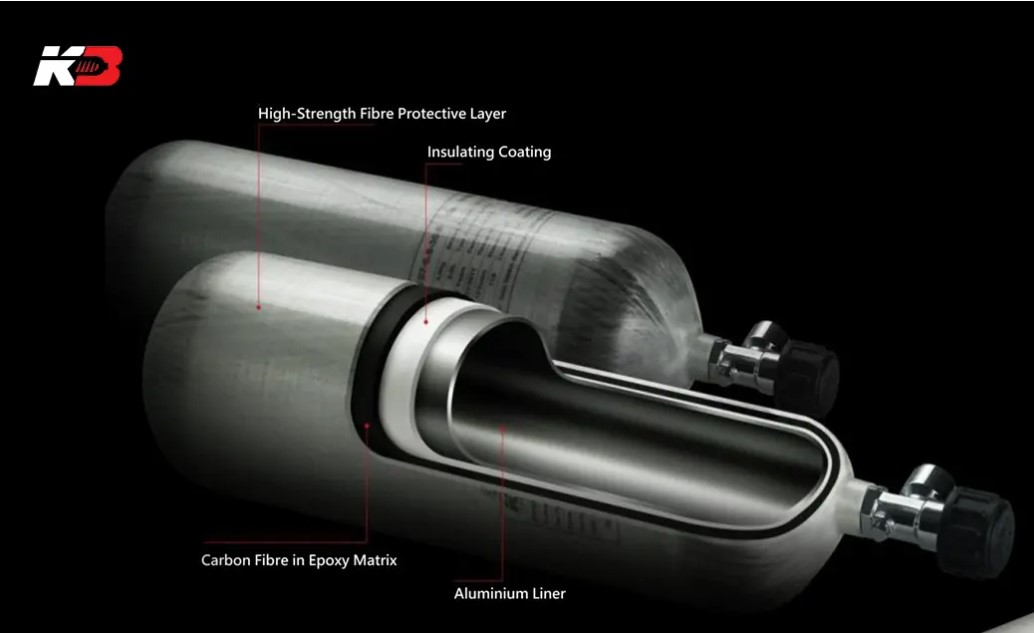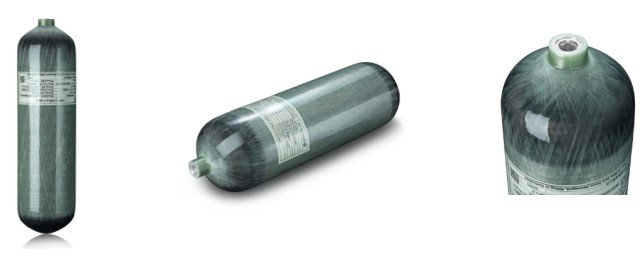Rocket power systems rely heavily on precision, efficiency, and material strength, as they are designed to withstand extreme environments and rigorous demands during flight. One key component that has become increasingly valuable in these systems is the carbon fiber composite tank. These tanks serve as high-performance storage solutions for propellants and pressurized gases, which are essential to rocket propulsion. In this article, we’ll examine the unique properties of carbon fiber tanks, their practical advantages in rocket systems, and the reasons why they’re an ideal choice for space applications.
Carbon Fiber Composite Tanks: An Overview
Carbon fiber composite tanks are pressure vessels constructed from layers of carbon fiber fabric, reinforced with resins. Unlike traditional metal tanks, carbon fiber tanks are much lighter, while maintaining an excellent strength-to-weight ratio. They are commonly used to store pressurized gases like oxygen, hydrogen, helium—all critical elements in rocket fuel and propulsion systems.
The tank’s core structure typically consists of a liner made of metal or plastic to provide gas impermeability, while the carbon fiber wrapping enhances strength and minimizes weight. Additionally, a protective coating may be applied to withstand extreme temperatures and corrosive substances.
Why Carbon Fiber for Rocket Power Systems?
- Strength and Durability: Carbon fiber tanks are incredibly resilient under high pressure, which is crucial for handling volatile rocket fuel and other pressurized gases. In rockets, tanks are often subjected to pressures exceeding hundreds of bars, and carbon fiber composites are well-suited to withstand such conditions.
- Lightweight Design: Rocket systems must be as lightweight as possible to maximize fuel efficiency and payload capacity. Carbon fiber tanks are lighter than metal tanks, allowing for higher fuel payloads and extended flight times without adding unnecessary weight. The lightweight property also reduces fuel costs and minimizes structural demands.
Practical Applications of Carbon Fiber Tanks in Rocket Systems
Carbon fiber tanks play essential roles in different parts of a rocket’s propulsion system. Here are some of their applications:
- Pressurant Tanks: In many rockets, helium or nitrogen is used to maintain pressure within the fuel tanks. Carbon fiber tanks are used to store these gases due to their durability under pressure, maintaining consistent propulsion and preventing fuel cavitation.
- Hybrid Rocket Motors: Hybrid rockets, which use a combination of liquid and solid propellants, require pressurized oxidizers. Carbon fiber tanks are suitable here as well, due to their ability to handle both the pressure and the temperature changes associated with hybrid rocket fuel combustion.
Manufacturing and Testing of Carbon Fiber Tanks for Space Use
For rockets, the manufacturing of carbon fiber tanks involves strict quality standards to ensure reliability and safety under extreme conditions. The tanks are typically fabricated using an automated filament winding process, which allows precise layering and strength control. Each layer of carbon fiber is precisely placed and bonded with resins to form a robust structure.
Testing is also an essential part of the process, with tanks being subjected to rigorous pressure, thermal, and environmental tests to simulate space conditions. These tests confirm that the tanks can withstand both the stresses of launch and the rigors of space.
Advantages and Limitations of Carbon Fiber Tanks in Rockets
Advantages:
- Enhanced Payload Capacity: The lightweight nature of carbon fiber tanks allows for a greater payload capacity in rockets.
- Reduced Fuel Consumption: With a lighter tank structure, rockets consume less fuel, contributing to cost savings and increased efficiency.
- Corrosion Resistance: Carbon fiber is resistant to many corrosive agents, increasing tank lifespan and reliability, especially when storing reactive propellants.
Limitations:
- Cost: Carbon fiber tanks are more expensive to manufacture compared to metal tanks. The materials and precision required to produce a reliable tank for space use make it a high-cost component.
- Complex Manufacturing Process: Producing carbon fiber tanks involves specialized techniques that may limit production speed and scalability.
- Repair Difficulty: Carbon fiber tanks are not as easily repairable as metal tanks. Once damaged, they may require full replacement rather than simple repairs, which could be costly.
The Future of Carbon Fiber Tanks in Space Exploration
As the aerospace industry progresses, demand for carbon fiber tanks in rocket propulsion systems continues to grow. Innovations in materials science are further improving the durability, weight, and cost-effectiveness of carbon fiber composites, making them more accessible for both government space agencies and private companies.
With increased focus on space exploration, extended space missions, and satellite launches, carbon fiber tanks will remain a fundamental component due to their unmatched strength-to-weight ratio. Future advancements may also see the integration of smart materials and advanced sensors within these tanks, providing real-time monitoring for enhanced safety and performance.
Conclusion
Carbon fiber composite tanks represent a significant technological advancement for rocket propulsion systems. Their superior strength, lightweight design, and resistance to extreme conditions make them an ideal choice for storing propellants and pressurizing gases in space applications. Despite their higher cost, the benefits they offer in efficiency, payload capacity, and durability justify their usage in modern aerospace technology. As research and innovation in composite materials continue, the role of carbon fiber tanks will only expand, shaping the future of rocket and space exploration for years to come.
Post time: Oct-30-2024




